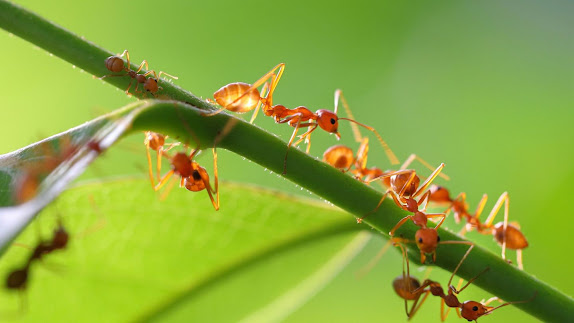Ants: The Incredible Tiny Workers of the Animal Kingdom
Ants are one of the most fascinating and incredible insects in the world. They are found in almost every corner of the world, from the forests of South America to the deserts of Africa, from the mountains of Europe to the jungles of Southeast Asia. Ants are social insects, which means they live in colonies that can consist of hundreds of thousands or even millions of individuals. In this blog, we will explore the world of ants, their incredible adaptations, and how they have become one of the most successful and dominant organisms on the planet.
The Ant Body: Structure and Adaptations
Ants have a distinct and unique body structure that is perfectly adapted for their lifestyle. The head, thorax, and abdomen are the three main parts of an ant's body. The head contains the brain, eyes, antennae, and mandibles (jaws), which are used for a wide range of activities such as feeding, grooming, and defense. The thorax is the middle part of an ant's body, which contains the legs and wings (in some species). The abdomen is the hindmost part of the ant's body and contains the digestive, reproductive, and excretory systems.
One of the most fascinating adaptations of ants is their ability to communicate with each other. Ants use a wide range of chemical signals to communicate, including pheromones, which are chemicals that are released by ants to signal to other ants. These chemical signals allow ants to communicate information about food sources, danger, and other important information that is essential for the survival of the colony.
Another incredible adaptation of ants is their ability to work together to achieve a common goal. Ants are social insects and live in colonies that can consist of hundreds of thousands of individuals. Each ant in a colony has a specific role and task to perform, and they work together to achieve the common goal of the colony. Some ants are responsible for finding food, while others are responsible for caring for the young, and still, others are responsible for defending the colony against predators.
Ants in the Environment
Ants play a vital role in the ecosystem, and they have a significant impact on the environment. Ants are decomposers, which means they help break down dead plants and animals and recycle the nutrients back into the soil. They also help aerate the soil, which allows oxygen to reach the plant roots and helps them grow. Some species of ants are also important pollinators, helping to pollinate plants and trees, which is essential for the survival of many species of plants.
Ants also have a significant impact on other animals in the ecosystem. Some species of ants, such as army ants, are predators and can have a significant impact on the populations of other insects and animals in their habitat. For example, army ants are known to raid the nests of other insects and eat their young, which can have a significant impact on the population of those insects.
The Social Structure of Ants
Ants are social insects and live in colonies that can consist of hundreds of thousands of individuals. The social structure of ants is fascinating and complex, and each ant in a colony has a specific role and task to perform.
The queen ant is the largest ant in the colony and is responsible for laying eggs. She is the only ant in the colony that can reproduce, and her primary role is to produce offspring and ensure the survival of the colony.
Worker ants are responsible for performing a wide range of tasks, including finding food, caring for the young, and defending the colony against predators. Worker ants are usually sterile females, and their role is essential for the survival of the colony.
Male ants have only one role, which is to mate with the queen. Male ants usually have wings and
Read More
- Octopuses are fascinating creatures that have captured
- Bees are one of the most important insects
- Jellyfish: A Marvel of Evolution



.jpg)
0 Comments